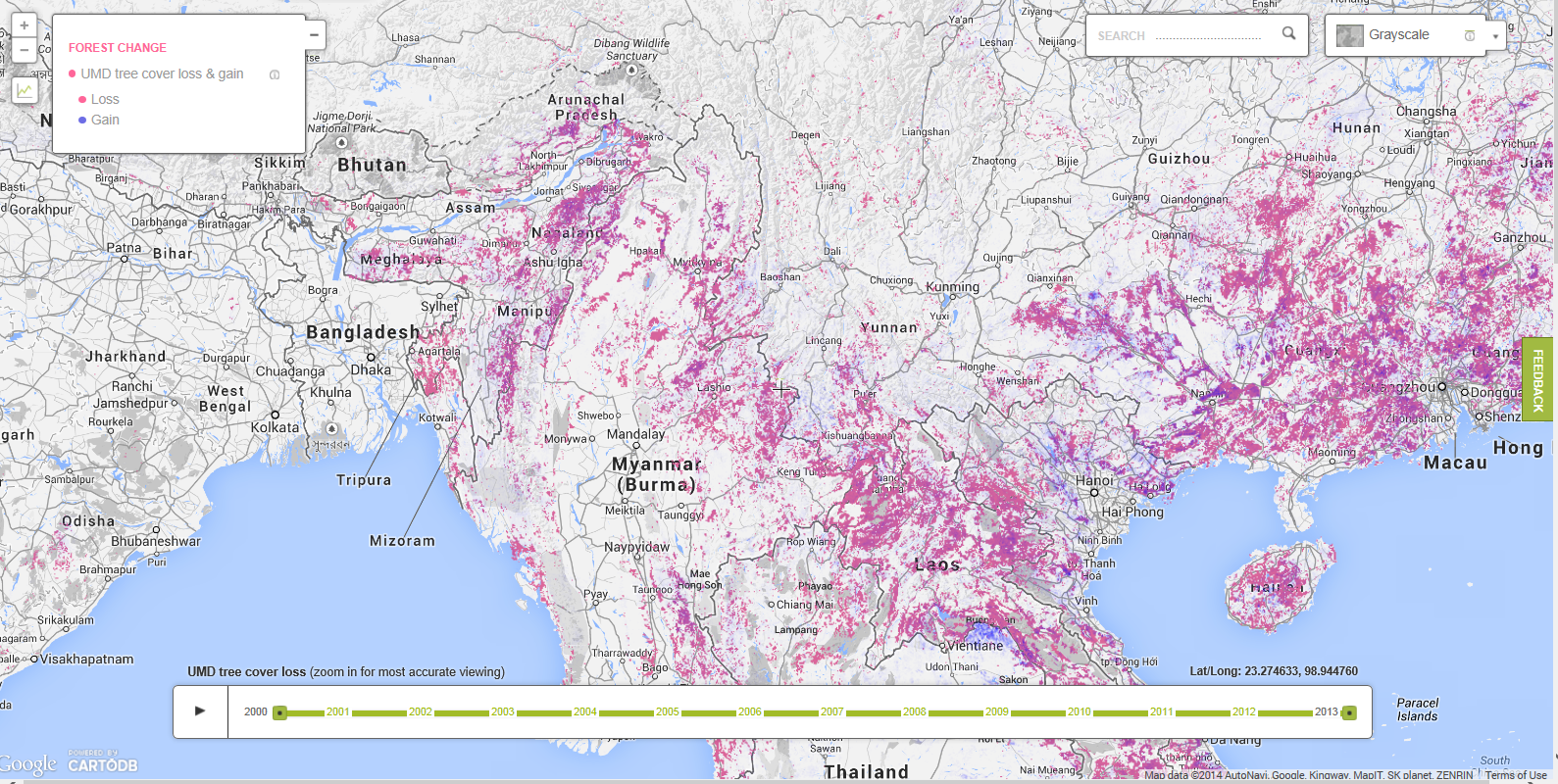Feb. 20, 2014 – Hilary Oliva Faxon
The planet loses forest at the rate of 50 soccer fields per minute. Deforestation can be devastating for biodiversity and forest-based livelihoods, but it’s not just a local problem: land use change contributes almost 20% of annual greenhouse gas emissions, driving global climate change. Unfortunately, large areas of forests are challenging to access, making them difficult to track and police. Global Forest Watch aims change that.
The platform, envisioned and managed by the World Resources Institute (WRI) with Google Earth Engine, the University of Maryland, and 40 other partners, documents near real time forest cover changes in over 200 countries on an interactive map. Zoom in to the region of your choice and scroll through time to see the when and where of forest gain and loss. The information has major implications for land tenure, REDD+ programs, protected area management, and indigenous and state natural resource claims.
Global Forest Watch harnesses amazing amounts of data – some from NASA, some that’s been languishing in USGS reels stored in South Dakota – and puts it online for free. It took 10,000 Google computers several days to upload a base map, said Google Earth Outreach and Earth Engine Engineering Manager Rebecca Moore, “This is when we [at Google] start drooling.”
Despite the data’s massive size, the resulting platform is both simple and accessible (play with it and see if you agree). Ease of use is perhaps the program’s greatest strength: “You can’t solve problems you can’t see. This gives the global effort a whole new set of tools going forward,” said USAID Administrator Rajiv Shah, linking the platform to Obama’s Climate Action Plan.
The launch featured an unusual, and remarkable, list of endorsements: the former president of Mexico, an Assistant Secretary of State, the head of USAID, the CEO of Unilever, a major Indonesian politician, Jane Goodall, an UN indigenous rights leader. The diverse group speaks to the tool’s range. With a few clicks, companies can monitor their supply chains, indigenous peoples can gauge encroachments on their land, and governments and NGOs can track illegal logging. Users can make their own maps, set an alert for changes in a specific area (for example a national park), post their own data and stories to the site, and potentially much, much more… WRI has left it up to users to apply the tool, though they have a strong supply of both good ideas and funding for on-the-ground partners.
A few things are especially interesting to me about the launch and the tool. Full disclosure: I’m currently on contract with a different program at WRI, but these observations and opinions are my own.
One: data is changing development. In academia, Yale’s Karen Seto use remote sensing imagery to model urbanization in India and China. Meanwhile LIDS’ Andrea Titus comments below about data debates around the post-2015 framework. Now big data is being harnessed to address global deforestation, a persistent and truly “wicked” environmental problem with complex ecological, social, and geopolitical implications. To see gray-clad federal employees cozy up with Bay Area software developers means big data has truly arrived.
Two: the private sector is critical. Even outside of Paul Polman’s short video speech, sustainable supply chains and the Consumer Goods Forum came up repeatedly. The private sector is embedded in the issue of global deforestation and has huge potential to limit the problem by committing to best practices. Global Forest Watch means companies can’t hide so easily, though whether that changes industry practice remains to be seen.
Three: green is global. Launching a tool that can be used by anybody, anywhere, for anything is a pretty remarkable idea. The openness of the platform and the “tell your own story” message make this a rather novel experiment, at least for the environmental movement. If Global Forest Watch can hit it half as big as Kickstarter, Instagram, and… dare we dream… Facebook, it will have made a big impact by raising the profile of forest issues worldwide.
So here’s the big question for hippies like me: can you hug a virtual tree?
[Image: globalforestwatch.org]

